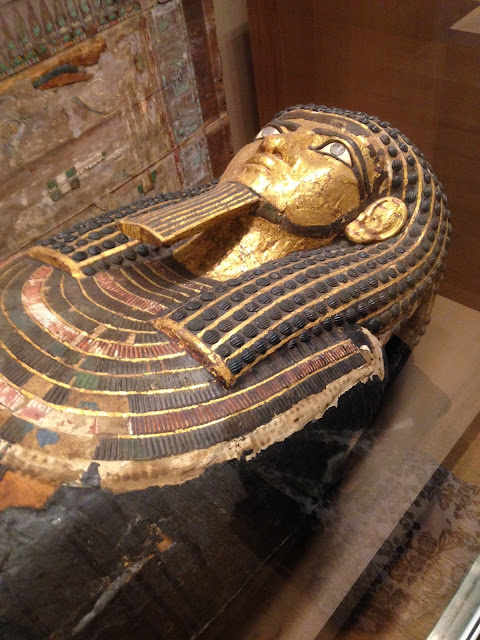Day 413 - Flemish painters
April 25, 2025
I'm going to start off by grousing about something different: the food at the Met. I arrived around 12:45, tired and hungry after a long walk to and a long wait at the doctor's office, and headed for the cafeteria ("The Eatery," as the Met likes to call it), only to find it was closed. There was a long line of people waiting to get into one of the cafes that backs onto Central Park, and a line, too, waiting to get through the self-service line at the Balcony Cafe. I pay an extra $100 a year for the level of membership that allows me to use the Members' Lounge, where I found that I could get seated at 2 (it was then 1:15), I was allowed to sit in a waiting area where I surreptitiously nibbled some almonds and a Fig Newton. But what a drag! I know the Met is remodeling to expand the Costume Institute - a money-maker, it seems; is the cafeteria closed for that reason? But it seems outrageous to me that anyone thinking to have lunch at the Met is going to have to spend $20 for a salad or a sandwich and a Coke.
Gallery 636 is devoted to late 15th and early 16th century painters from Bruges, Antwerp, and Brussels, the major artistic and cultural centers of the Low Countries during that period. (My ignorance - I never knew that Memling settled in Bruges.) The works all depict religious subjects, although I wonder whether the inclusion of donor portraits in altarpieces and other works paved the way for portraits, period.
The gallery makes me appreciate the detective work involved in being an art historian. For instance, a Gerard David painting (of which there are several in the gallery) shows a Nativity with donors and Saints Jerome and Leonard. The two donors are unknown. But, says the wall sign, they might have been named Anthony and Catherine, since they've been painted with these saints' attributes. A Carthusian monk shown in the background of another David painting of the Virgin and Child with four angels (the monk is so small I confess I can hardly make him out) suggests that the painting was linked to a Carthusian monastery outside Bruges.
Toda's selection, also by David, offers yet another example of artistic detective work - or is it informed speculation? It consists of twin panels, each about 20 inches high and 6 inches wide, depicting Saint John the Baptist, clothed in red and holding a symbolic lamb, and Saint Francis, his palms upraised to receive the stigmata as he envisions a crucified Christ in the sky above. According to the signage, images of Saint John were common in Northern art, but he was rarely paired with Saint Francis, a saint venerated in Italy. It seems possible, then, that the paintings were commissioned by an Italian merchant working in Bruges.
How nice to have the expertise needed to make reasonable judgments about provenance, iconography, and so on!
For myself, I wonder whether David's portrayal of Saint Francis could have been influenced by the Bellini painting of the saint that's one of the treasures of the Frick - especially because I read that Northern artists were aware of some elements of Italian decoration. I check the date of the Bellini work - ca. 1475-80 - and find that it preceded David's Saint Francis by about ten years, so this seems at least possible. On the other hand, maybe there were just fairly standard conventions for how to represent the saint receiving the stigmata. Then too, in the Bellini work, Francis' hands are outstretched at hip level; in the David, his hands frame his face.




Comments
Post a Comment